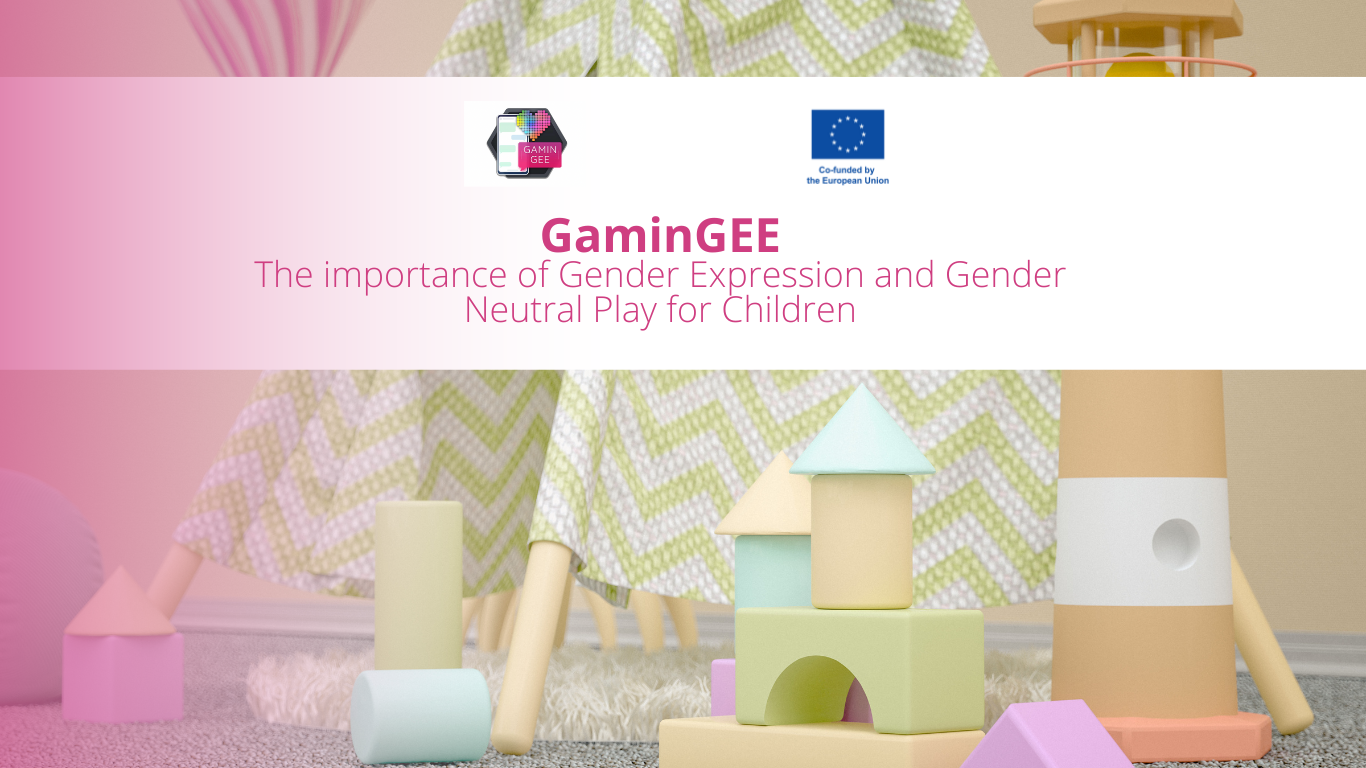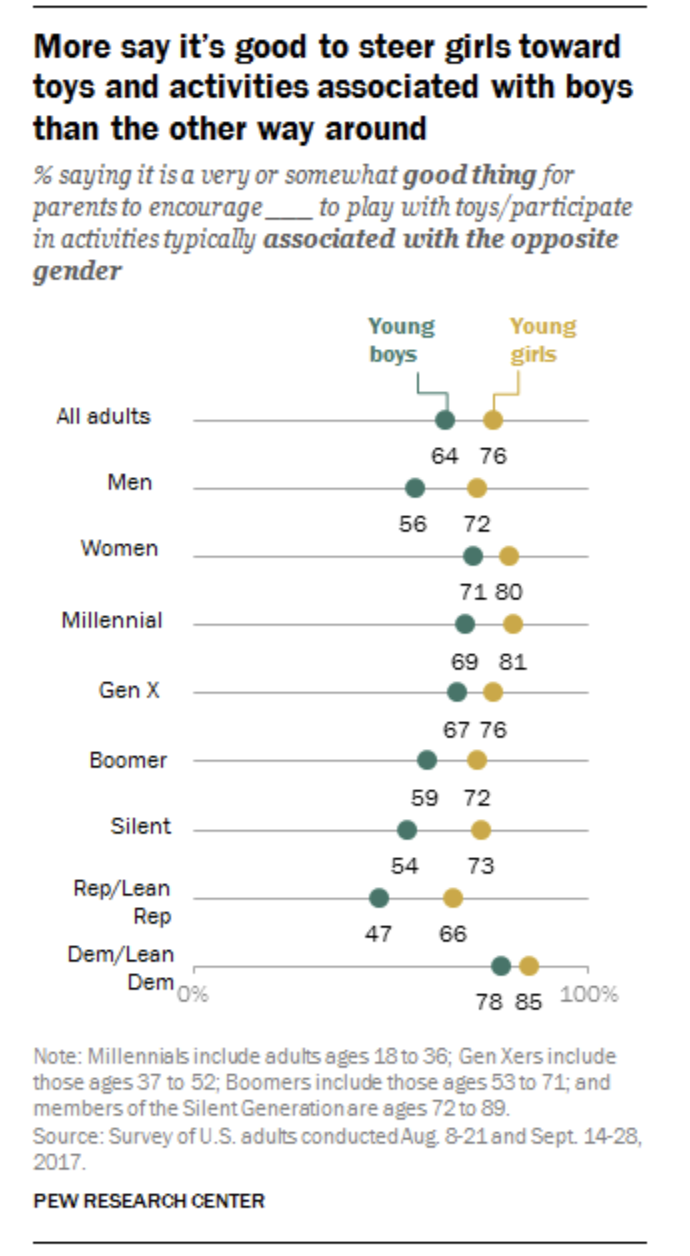
GaminGEE is an Erasmus+ KA2 initiative which fully supports and encourages integrative early gender equality education and fighting gender inequality in school and family contexts.
An issue that we currently want to raise awareness on is that people get discriminated against and are socially excluded if they don’t behave according to their birth gender prescribed characteristics. For example, Harvard Business Review (2018) has found that women that are more loud and assertive can be seen as less likeable by some, and men that don’t fit in the typical standard of masculinity by doing things such as asking for help, openly displaying emotions such as sadness, being vulnerable or overall appearing „soft”, can get deemed as less masculine or even effeminate. The negative perceptions associated with these otherwise natural characteristics of all humans can have a negative effect on people’s self-esteem and force them to conform to a clearly drawn dividing line between genders.
This however raises the question of when does this divide actually start? At what age are people taught about how it is appropriate to act according to their birth assigned gender?
First of all, it is important to note that the word gender should not be confused with the word sex. As the Council of Europe explains, the sex is “the different biological and physiological characteristics of males and females, such as reproductive organs, chromosomes, hormones, etc.” while the gender refers to “the socially constructed characteristics of women and men – such as norms, roles and relationships of and between groups of women and men”. Gender varies from society to society and can be changed.
Second of all, it was proven that a lot of behaviours are taught early on through play. According to UNICEF, children start developing a sense of gender identity around the age of 3 and by the age of 5, they already have a sense of gender stability and begin to express their gender identity through both words and actions.
Currently, if we were to divide what styles of play are widely thought as „specific” for boys and girls, we would get the following 2 columns which can be consulted in table 1:
Table 1. Comparison of prototypical games in boys and girls

Needless to say, this way of seeing things reinforces stereotypes about gender and are harmful for children’s social and emotional development. Therefore it is important to break the „pink is for girls and blue is for boys” mindset.
The GaminGEE platform offers more information and specific materials for teaching gender identity and gender diversity to young children.
It is fundamental to make this shift in order to achieve gender equality because the mentalities that children will adopt early on will shape the ones they will have as adults but this change cannot be achieved by simply witholding certain gendered toys or activities from children and giving them a simpler toy that is not correlated with anything but by not only allowing but also encouraging boys, girls and non conforming youth to like the toys typically associated with boys, as well as girls, together with their socially implied characteristics.
More specifically, this aspect was made clear by the childhood story of a boy that used to admire girl characters and take them as role models but was actively discouraged to do so and made to choose boy characters instead. He illustrated his story in a comic and some of the most important points he raised are that girls are taught about girls power and nowadays are shown multiple strong female role models, boys are taught the opposite because they are expected to only be interested in male role models and are shamed if they pick a female one, while a girl can pick to look up to any characters, be them male or female. So by not allowing boys the same liberty to choose, they will only internalize early on that girl characters are not as good as boy ones and can only be a first choice for girls.
According to a 2017 survey (see figure 1), most Americans see value in steering children toward toys or activities associated with opposite gender but a common finding across all variables: gender, age and political affiliation was that a bigger percentage of people think that girls should be encouraged to play with toys and participate in activities that are usually male orientated than for boys to do the same with female oriented things.

Figure 1. Opinion on the type of games that should be encouraged in children
So, just as Megan K. Maas has stated „Gender neutrality represents the absence of gender – not the tolerance of different gender expression. If we emphasize only the former, I believe femininity and the people who express it will remain devalued”. Therefore both styles of play should be encouraged in order to achieve true gender equality early on in a child’s development process.
According to UNICEF, some ways to remove gender stereotypes from playtime are:
- Encourage school attendance and give girls and boys equal and adequate time to play and participate in household chores, regardless of gender.
- Make sure your children play with toys and games that develop the complete set of social and cognitive skills. For example, look for games that develop literacy, numeracy, spatial, cognitive and social skills or toys that stimulate creativity and problem-solving.
- Help your children read books and watch media that tell inclusive and positive stories about children in all their diversity, that celebrate different cultures, include children with disabilities, and provide positive portrayals of gender roles.
- Have your children play with toys and games traditionally associated with the opposite gender. Both girls and boys can play with dolls and cooking toys as well as engage in physically active games and sports. Toys and games should ultimately be tools that enable children to become agile and adaptive learners, and teach skills such as creativity, communication and problem solving.
- Avoid toys and games that deliberately encourage gender stereotypes, such as pink packaging, unicorns, rainbows and hearts for girls versus blue packaging, robots, spaceships and toolboxes for boys. Ensure that toys and games given to children are inclusive and diverse in their representation.
- Be aware of the way marketing and advertising can reinforce harmful gender norms and exclude children. Choose toys, books and games that send positive messages to your children.
- Prevent children from playing with guns and violent toys, including overtly violent or sexualized digital games. The digital gaming industry is a fast-growing sector which is also deeply gender-biased, sexualized, and condoning of violence in much of its content. These kinds of games, often played by children and targeted at adolescents, have the capacity to deepen gender biases and promote unhealthy and harmful behavior and attitudes in future generations.
- Replace or supplement digital games with constructive physical activities, such as sports and outdoor games. Physical activity is essential for the healthy development of all children, no matter their gender, and children should be encouraged to engage in physical play as early in life as possible through sports, going to the playground or playing games with their friends. As a parent, try to support a full range of cognitive and creative skills for your children and ensure that girls and boys receive equal play time, indoors and outside.
- Encourage your child to translate anger and frustration into problem-solving, positive communication and constructive physical activity rather than use aggression or bullying
Further information about this topic and many more can be found on the GaminGEE platform by accessing https://learn.gamingee.eu/ where you will find a wide selection of free resources and learning materials that can be used inside the classroom, as well as the family home.



Leave A Comment